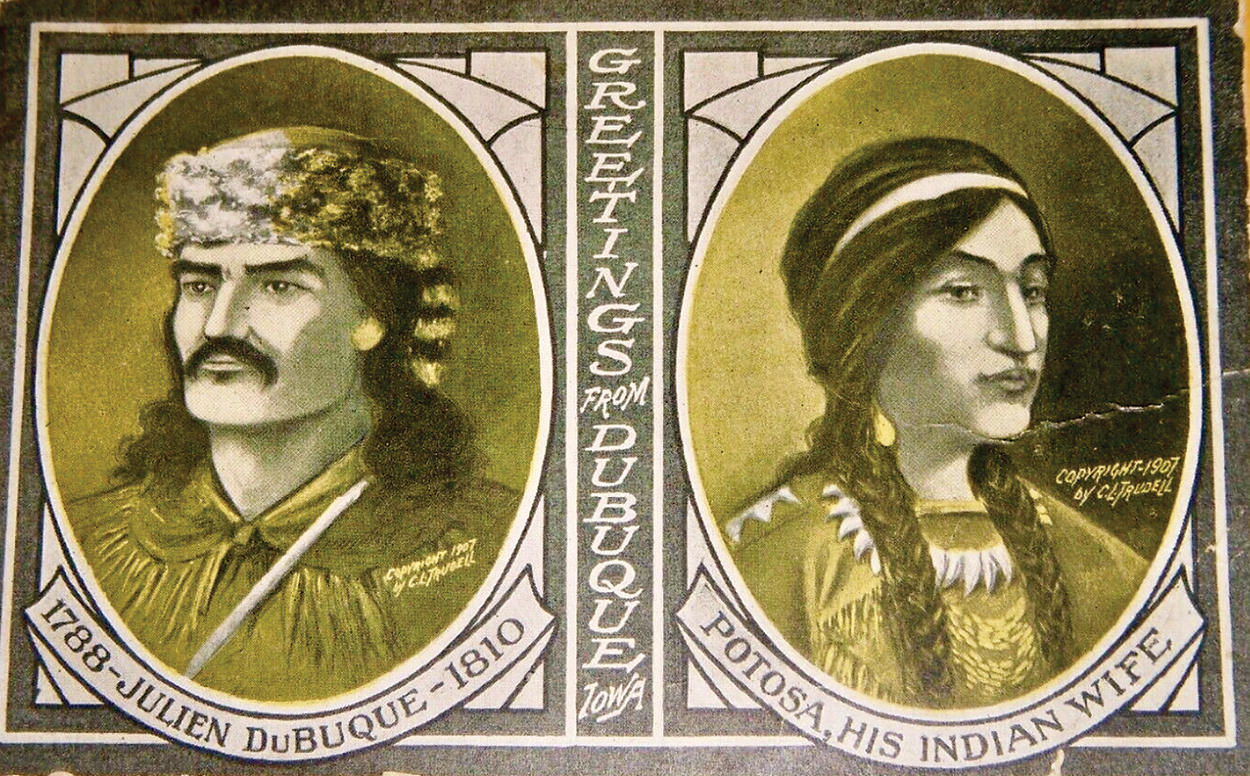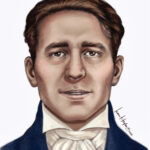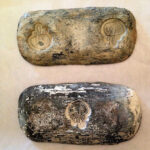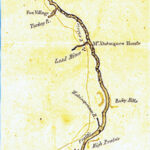Julien Dubuque left no journals of his exploits and no diary detailing his day-to-day activities, but we do know some basic facts about his life. Dubuque was the youngest son of Noel-Augustin Dubuc and Marie Mailhot. He was born on January 10, 1762, in St. Pierre les Becquets, Canada. Dubuque grew up in Quebec, Canada, where he learned to read and write at an early age. At the age of 23, he and an older brother journeyed to Prairie du Chien, Wisconsin, where the two engaged in trade.
On September 22, 1788, Dubuque and the Fox Indians came to an agreement that allowed Dubuque to mine lead on the western shore of the Mississippi River near where the city named for him now stands. In 1796, Dubuque petitioned Spanish Governor Francisco Luis Hector de Carondelet to confirm the boundaries of what he called “The Mines of Spain.” That agreement defined boundaries from the mouth of the Little Maquoketa River southward to the mouth of the Tetes des Morts Creek and inland a distance of nine miles, creating a tract totaling some 189 square miles. Did these agreements sell the land to Dubuque or just give him permission to mine lead on the land? Historians are still debating this issue.
Details outlining Dubuque’s personal life are also up for debate. Did he actually marry Fox Chief Peosta’s daughter Potosa as legend claims? It would have followed the custom of the land and would have solidified his relationship with the Fox. Or did he marry Pelagie, daughter of Indian Agent John Campbell and his Indian wife as suggested by local historian M.M. Hoffmann? Or did he marry Josette Antaya, a woman who made claims on Dubuque’s estate following his death? Again, historians disagree, although most do agree that he likely married.
What did Julien Dubuque look like? Again, there is no record, no period painting, and, of course, no photograph. A 1907 painting by Charles Trudell depicts Dubuque as a backwoodsman wearing a coon skin cap and a buckskin shirt, with long hair and a flowing mustache. In 2000, forensic artist Karen T. Taylor created an image of Dubuque for the Dubuque County Historical Society based on photographs of his skull. This image depicts Dubuque as a well-dressed, dapper young man.
Perhaps the inventory of Dubuque’s estate following his death on March 24, 1810, is the best resource we have available to help us understand who Julien Dubuque really was. Robert Klein provides a detailed listing of Dubuque’s estate inventory in his 2021 book, Julien Dubuque: Portrait of a Pioneer. Here we learn Dubuque was more than just a French Canadian lead miner. He was a farmer and a trader too and kept an impressive household.
A public auction of Dubuque’s estate was held on June 22, 1810. Additional items were later auctioned off in Prairie du Chien. Finally, Dubuque’s real estate holdings were sold on March 4, 1811, in St. Louis. The first 60 items of the 208 parcels inventoried in June were items from Dubuque’s “living quarters to the north,” possibly somewhere near the intersection of Kaufmann and Central Ave.
Among Dubuque’s personal inventory were items typically found in a well appointed kitchen and included 45 plates, 18 coffee cups, a teapot and coffee mill, a large crystal jar, 10 stemmed wine glasses, 8 tumblers, 5 flasks, 2 decanters, and a cast iron cooking stove. Furniture included a writing desk and writing slates.
Dubuque’s household items included 2 paintings, 2 razors, an old silver watch, a pair of small pistols, a dagger, a double barreled gun, 2 sabers, and 58 books including the Dictionary of Arts and Crafts in five volumes and eight volumes on governmental science. Personal items of clothing inventoried for auction included a pair of boots, 3 pairs of shoes, 1 pair of suspenders, 2 pairs of stockings, 6 linen shirts, 3 trousers, 8 waistcoats, 5 plain handkerchiefs, and 5 suits of clothing.
Today, Dubuque is well known as a successful lead miner and his estate supports that. Some 20,629 pounds of lead plates, lead ash still containing lead, and lead ball were auctioned off following his death. Also included in the estate were 358 boards, 80 pounds of nails, and a variety of carpentry tools pointing to the possibility of future construction projects.
The fact that Dubuque was heavily involved in Indian trade is supported by the number of animal skins in the inventory: 674 muskrat, 453 raccoon, 12 mink, 20 otter, 3 bear, and 9 cub along with 35 pounds of beaver skins, 1240 pounds of deer skins, and 130 pounds of down feathers. Items to be traded to the Indians included cloth, arm and wrist bracelets, 115 pairs of earrings, and more than 1300 brooches of various sizes.
Dubuque was also a farmer. An early map shows four cultivated fields, each measuring about 400-500 acres as estimated by historian William Wilkie. Dubuque’s farm animal inventory included 2 horses, 1 mare, 3 pairs of oxen, 7 bulls, 7 cows, 2 calves, 12 chickens, 1 rooster, and 48 pigs. Also inventoried were a granary, a horse-powered mill, a barn, and farm implements, including 8 sickles, 6 hatchets, and 5 plow blades. At the time of his death Dubuque owned 22 bushels of wheat and 800 pounds of flour.
Dubuque’s real estate holdings were divided into 13 parcels and sold to the highest bidders for a total of $14,463. In 1804, he had sold the southern portion of the Mines of Spain to Auguste Chouteau in order to settle a debt.
Unfortunately, despite Dubuque’s successful lead mining, trading, and farming efforts, he died deep in debt. While the auction of his estate brought in nearly $17,000, claims against the estate totaled more than $21,000. Klein wrote of Dubuque, “He seems to have treated his Fox friends well, perhaps so well that he was in debt at the time of his death.”
This article is part of the Shades of Dubuque series, sponsored by Trappist Caskets, hand-made and blessed by the monks at New Melleray Abbey. More at TrappistCaskets.com.







Comment here